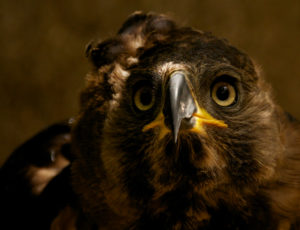INSPIRATION
Rescuing Raptors In Naivasha: Interview With Shiv Kapila

Saving owls in a country that believes them to be harbingers of death was never going to be easy. But the Naivasha Owl Centre, founded in 2014, not only rescues and rehabilitates owls but Kenya’s biggest and most bellicose birds of prey, too. Tamara Britten visited the centre in Naivasha and asked Shiv Kapila what it’s like to rescue raptors.
How did you start?
It all began in 1996 with a little Barn Owl called Fulstop. He was brought to Sarah Higgins’ house in Naivasha with a badly damaged wing. When the vet said he could mend the bones but the bird would never fly properly again, Sarah built an owlery. From then, people started bringing in injured, sick and orphaned owls. And from there we branched into treating raptors like eagles, kites and vultures, and other large birds such as pelicans and storks. In 2014, Sarah, Simon Thomsett and myself got together and formalised the centre under a trust now known as the Kenya Bird of Prey Trust.

How do you treat the birds in your care?
Our aim is to rehabilitate all birds into the wild. The vet treats them, operates if necessary, and they stay with us until they fully recover. There are a series of stages that birds pass through while they’re in our care, starting with treatment in the clinic and progressing to larger cages in which they can fly. They end up being trained in the rehabilitation area using falconry techniques.
Then you release them?
It’s not that simple. You have to do due diligence before release, otherwise it can be considered abandonment and neglect. These birds need to hunt and defend their territory to survive. During their time with us, they often lose the knack and, if we released them, they might not be able to feed themselves. Our falconers work with them, training them to hunt with the skill they’ll need to make a life for themselves.

How do you train a bird to hunt?
Alongside Simon and me, we have four highly experienced falconers, one of whom is a young woman: I think she’s the only Kenyan woman falconer in history. They fly the birds awaiting release every day, training them to spot and catch their prey, and to return to the centre each night. Only when they are fully capable of supporting themselves do we release them.
Do you release them around Naivasha?
Again, it’s not that simple. Raptors are highly territorial. If we released a raptor into the territory of another bird of the same species, the original resident would attack the newcomer and they would fight — possibly to the death of one or both of them. We work with the Kenya Wildlife Service to find suitable areas in which there isn’t a resident bird of the same species.
How do you collect an angry and injured predator?
It’s challenging! The trick is to mind their very powerful feet, keep them calm and comfortable, and get the bird to the centre as quickly as possible.

You say that you release all birds that have made a full recovery. What happens to those that don’t?
If a bird’s wings, legs or eyes don’t fully recover, and it is unable to fly or walk, it won’t survive in the wild. We keep such birds at the centre, and breed them in captivity, or use them in our educational programmes. ‘The jewels of the centre are our Crowned Eagles. Simon has a pair, both now over 40, that has produced 12 chicks in the last 35 years, all of which have been released. Captive breeding of rare species such as this is extremely valuable; only about 200 pairs of Crowned Eagles are left in Kenya. We also have some imprinted birds: those that have been raised by people from an early age and therefore think they’re humans.We currently have four imprinted Marsh Owls that like steam; every time Sarah has a shower, they fly through her bathroom window and bask in the steam while she showers.
Our Top Experiences
SEEN SOMETHING YOU LIKE?
Enquire now and our team will create a custom itinerary tailored to your preferences.

CONTACT
enquiries@nomad.africa
Tel: +254 708 238 738
Purple Nomad Ltd
PO Box 69671 - 00400
Mwanzi Avenue, Nairobi, Kenya



